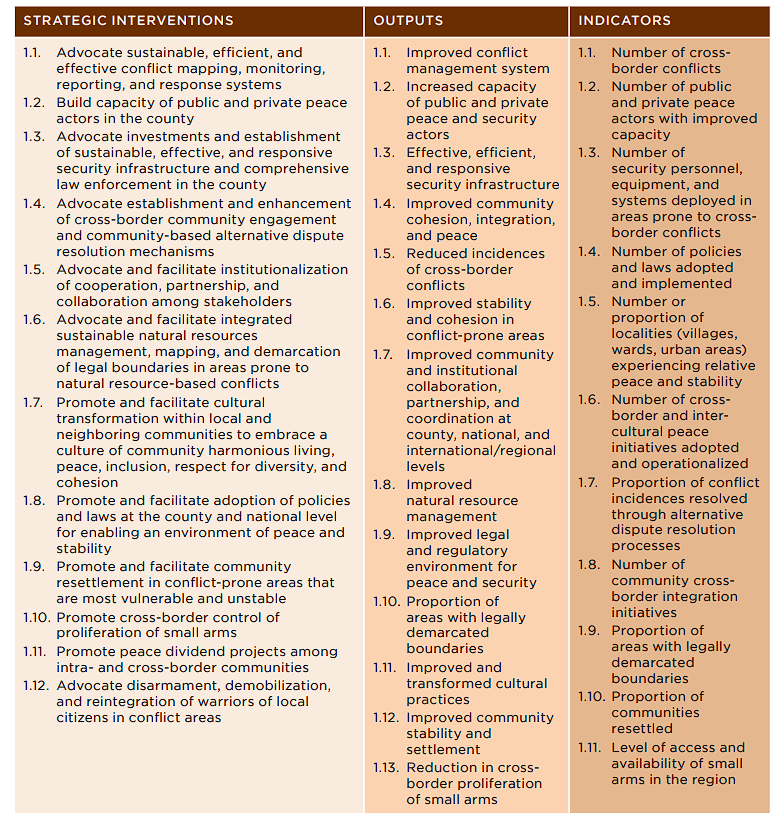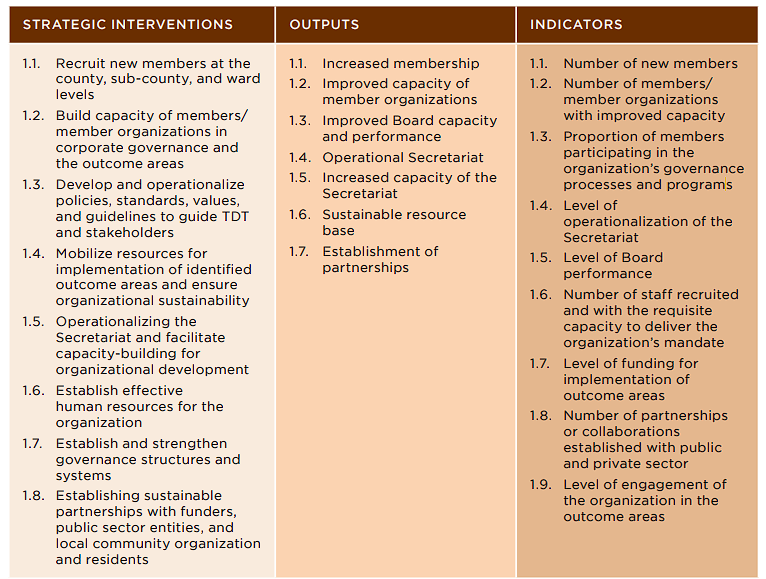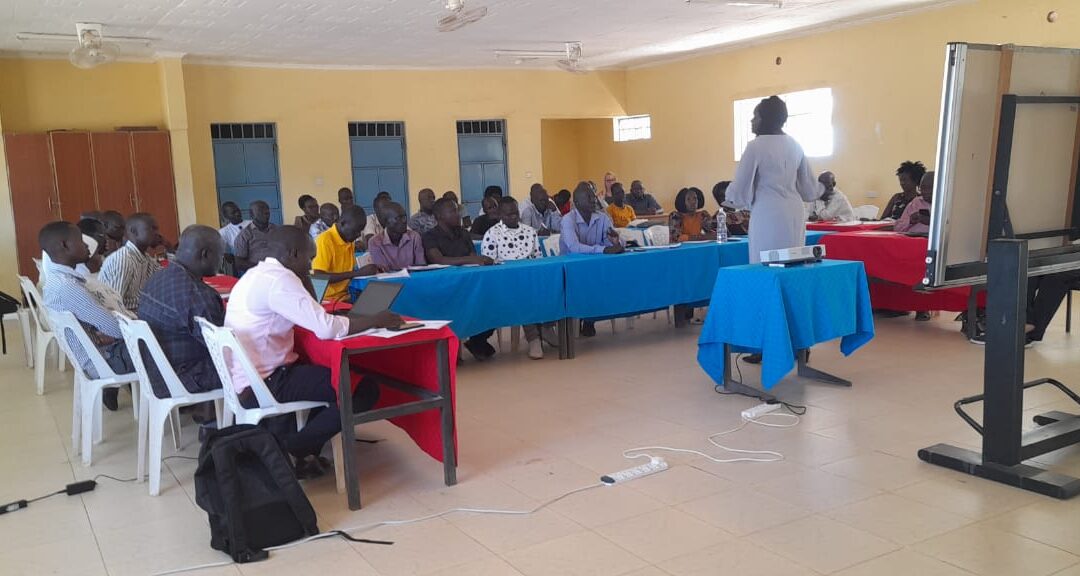Key Focus Area 1: Improved Governance and Accountable Leadership
High poverty and illiteracy rates have deprived the Turkana community of voice and agency to foster accountability. Some public officials and leaders use public resources to enrich themselves and promote self-interests by exploiting the illiterate population. These factors have contributed to exacerbated corruption, nepotism, and general lack of accountability in the public sector. Additionally, non-compliance with the rule of law is widespread and when no one is held accountable, impunity increases.
Poor governance contributes to inequitable resource allocation. Leaders allocate resources based on patronage and political considerations, rather than prioritized needs. This practice has resulted in poor distribution of development resources and poor service delivery. Poor leadership is also disempowering, as it constrains public participation and limits opportunities for people-centered development. On the whole, improving governance and fostering accountable
leadership will give voice and agency to the local communities. Also, it will enable people to participate in decision-making in line with their aspirations for a prosperous and dignified county.
The strategic interventions and outputs for this outcome area include:
| STRATEGIC INTERVENTIONS | OUTPUTS | INDICATORS |
| 1.1. Build capacity of residents and civil society organizations in civic engagement and participation in local governance and development processes 1.2. Establish structures for community leadership, dialogue, and engagement 1.3. Advocate the adoption of e-government and open governance processes, accountability in procurement and public investments, and enforcement of public accountability and ethics laws 1.4. Advocate provision of quality, accessible, equitable, and decentralized public services 1.5. Build local leadership capacity for good governance 1.6. Advocate enhanced civic space for public-private engagement in governance and development 1.7. Advocate adoption of policies and laws to promote good governance and leadership in the county |
1.1. Increased capacity of citizens and CSOs to engage in county policy processes 1.2. Constructive engagement between local communities and leaders
1.3. Increased accountability in public processes |
1.1. Number of CSOs involved in county structures and process on local governance and policy processes 1.2. Proportion of population and key stakeholders participating in local governance processes 1.3. Number and quality of formal presentations made by residents on local governance issues 1.4. Number of public-private engagement structures 1.5. Number of public services decentralized 1.6. Proportion of open governance standards adopted 1.7. Number of public services through e-governance 1.8. Number of quality county leaders elected at the county and national level 1.9. Proportion of elected/appointed leaders actively engaging in local governance and development issues or representing the county in the legislature 1.10. Number of corruption or public process irregularities cases reported 1.11. Number of policies and laws adopted |
Key Focus Area/Outcome 2: Improved Education Standards and Literacy Levels
The county situation analysis and review of various official documents shows that Turkana has low levels of literacy alongside a high incidence of poverty and inequality. In part, this is linked to traditions and practices that place little importance on the education of children. Among other things, parents turn their school-age children to pastoralism to care for livestock. Further, the county has poor infrastructure for education because of a long history of marginalization. This history has witnessed limited investment in education in the area. Turkana County has a poor distribution of educational facilities, limited and inadequate education infrastructure, insufficient numbers of teachers and classrooms, among other factors that contribute to low enrollment.
At the same time, people depend on pastoralism. The community has not diversified its economic activities. Droughts and recurring famine often wipe out livestock, the main source of livelihood. Many become impoverished. Restocking after droughts is always difficult because of lack of income to buy new stock. In turn, this leads to increased inequality and widened gaps between those who have and those who do not have. Illiteracy, combined with poverty and inequality,
also lead to disempowerment. Disempowerment contributes to ill-informed choices within public affairs. Improving access to education and strengthening interventions to enhance literacy levels will lead to higher numbers of educated and skilled people who can effectively use their skills to promote development in the county, resulting in enlightened communities. These will be important steps toward having a pool of quality human resource in Turkana County.
The strategic interventions and outputs are described in the table, below:
| STRATEGIC INTERVENTIONS | OUTPUTS | INDICATORS |
| 1.1. Advocate increased investment in teaching and learning infrastructure and materials in the county 1.2. Mobilize community to increase enrollment of children in basic education 1.3. Advocate investment in and provision of decentralized adult education and nomadic relevant pre-primary and basic education 1.4. Advocate transparency and accountability in provision of education scholarship and bursary management and administration in basic education, Technical Industrial Vocation and Entrepreneurship (TIVET) and universities 1.5. Launch campaigns against child marriages, teenage pregnancies, and child labor 1.6. Advocate enhanced school feeding programs to promote retention of students in basic education 1.7. Advocate safe and secure schools 1.8. Advocate scholarships to fill skills gaps in the county |
1.1. Increased investment in schools’ development in areas with low access |
1.1. Number of schools developed/constructed 1.2. Number of children enrolled, retained, transition, and completing basic education 1.3. Number of students completing tertiary and university education 1.4. Number of students dropping out of school 1.5. Number of adult education facilities designated and active in providing adult education 1.6. Number of adults enrolled in and completing adult education 1.7. Level of increase in qualified professionals in the county 1.8. Level of improved performance among school-going children enrolled in basic education 1.9. Proportion of children accessing food and nutrition support in schools |
Key Focus Area/Outcome 3: Cohesive and Secure Communities, and Reduced Border Conflicts
Competition over access to resources fuels inter-communal conflicts in the county. Climate change effects, such as droughts and recurring famine, lead to continuous conflicts among communities. Furthermore, porous borders with neighboring countries and weak vigilance by security forces make it possible for arms to flow into the county. Because of this, community members have easy access to arms. Also, because of high levels of mistrust and suspicion, local leaders have not effectively addressed this challenge. Engagement with the national government has not adequately addressed
security issues. The effect of insecurity is disempowerment among affected families due to loss of lives, displacement, loss of livelihoods, and high school dropout rates. On the whole, improving security will enable communities to carry out economic activities in safely and securely . It will allow increased private business investments in upcoming market centers and promote interaction among communities. The strategic interventions and outputs for this outcome will be:

Key Focus Area/Outcome 4: TDT is a Well-Governed and Effective Institution
Achieving the outcomes in this plan will require building the voice and agency of TDT. The Trust will strengthen the capacity to engage with national and county governments and create the enabling environment for achieving these outcomes. The TDT is expected to strengthen the capacity to empower communities and to work with other civic organizations.
At the end of the plan period, it is expected that TDT will have the requisite technical and financial capacity to deliver on the mandate of enhancing synergies among civil society organizations, private sector and FBO and government in addressing social-economic needs in the county by influencing governance and development decisions.
The strategic interventions and outputs will be:


